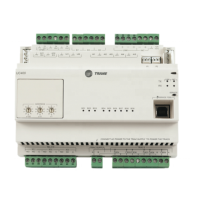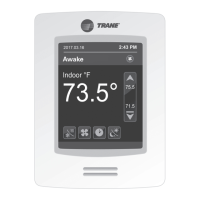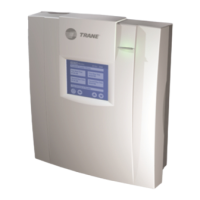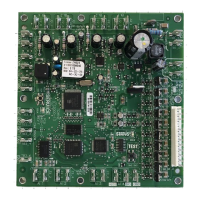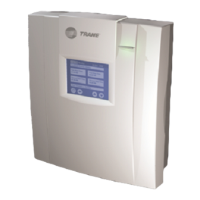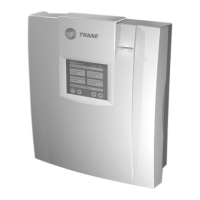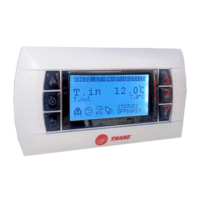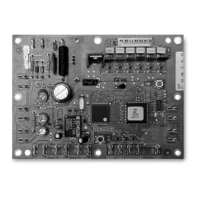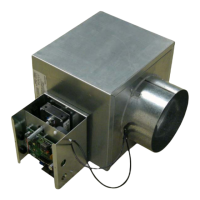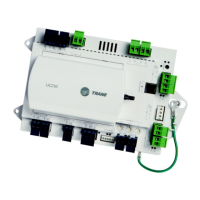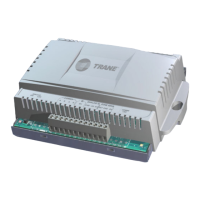BAS-SVX50F-EN 35
Overrides
Overrides can be performed at priority level 8 using the Tracer TD7. Only overrides at priority level
8 Manual Operator can be created or released from the TD7 display. User overrides are defined as
points that are controlled at: 1 Manual Life safety, 8 Manual Operator (display priority), 11 User
medium, and 13 User low.
There are three different types of override screens, which
vary according to the typ
e of data in each
override:
• Binary overrides or multistate overrides (four or fewer states).
• M
ultistate overrides (five or more states).
• Analog overrides.
The Point Override Screen
Navigate to the Point Override screen by touching the point name from any point report, such as
the Override Summary Screen as described in “Reports,” p. 26.
From the Point Override screen you can perform overr
ides, se
t them to expire in a user-defined
interval, or release a point that is currently overridden. All Point Override screens, (analog, binary,
or multistate), are comprised of the same basic components (see Figure 24).
Figure 24. Point Override screen components
Release
Override
Override
Status Area
Override Value
Setting Area
Temporary
Override Area
Action
Area
See Note
“Releasing an
Override.”
Override Status Area
This area shows who is controlling the point, followed by the active priority level and the current
value of the point. If security is enabled, the name of the user that performed the override will be
shown in the Controlled By field. If security is disabled, “Front Panel” is displayed for all overrides
performed by the TD7 display.
Override Value Setting Area
This area contains buttons that when pressed, change the override status. The button that is active
has a shaded appearance in color. The exception is analog points, which require manually entering
a value. See “Analog Overrides,” p. 37.
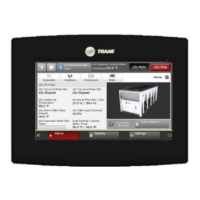
